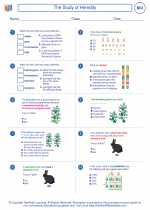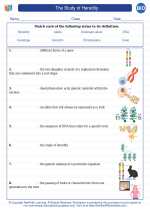Nodes of Ranvier
The nodes of Ranvier, also known as myelin sheath gaps, are small gaps in the myelin sheath that covers the axons of neurons. These gaps are essential for the conduction of nerve impulses along the axon. The myelin sheath is a fatty, insulating layer that surrounds the axon and helps to speed up the transmission of nerve impulses.
At the nodes of Ranvier, the axon membrane is exposed, allowing for the efficient propagation of action potentials. This saltatory conduction, which refers to the "jumping" of the action potential from one node to the next, significantly increases the speed of nerve impulse transmission.
Structure of Nodes of Ranvier
The nodes of Ranvier are characterized by a high concentration of voltage-gated sodium channels and potassium channels. These channels are responsible for the rapid depolarization and repolarization of the axon membrane during the propagation of the action potential.
Additionally, specialized cells called Schwann cells in the peripheral nervous system and oligodendrocytes in the central nervous system play a crucial role in the formation and maintenance of the myelin sheath and nodes of Ranvier.
Function of Nodes of Ranvier
The nodes of Ranvier serve several important functions:
- Saltatory Conduction: The presence of nodes of Ranvier allows for saltatory conduction, which significantly increases the speed of nerve impulse transmission along the axon.
- Action Potential Propagation: Action potentials are regenerated at each node of Ranvier, ensuring the efficient propagation of nerve impulses along the axon.
- Energy Conservation: Saltatory conduction reduces the energy expenditure required for the propagation of nerve impulses, as the action potential "jumps" from node to node rather than traveling along the entire length of the axon.
Study Guide
To study the nodes of Ranvier effectively, consider the following key points:
- Understand the structure and function of the myelin sheath and its role in nerve impulse transmission.
- Learn about the molecular composition and organization of ion channels at the nodes of Ranvier.
- Explore the differences between the peripheral nervous system (Schwann cells) and the central nervous system (oligodendrocytes) in terms of myelination and node of Ranvier formation.
- Consider the clinical relevance of nodes of Ranvier, such as demyelinating diseases like multiple sclerosis and their impact on nerve conduction.
By mastering these concepts, you will develop a comprehensive understanding of the nodes of Ranvier and their importance in the proper functioning of the nervous system.
.◂Biology Worksheets and Study Guides High School. The Study of Heredity

 Worksheet/Answer key
Worksheet/Answer key
 Vocabulary/Answer key
Vocabulary/Answer key
 Vocabulary/Answer key
Vocabulary/Answer key
 Vocabulary/Answer key
Vocabulary/Answer key
